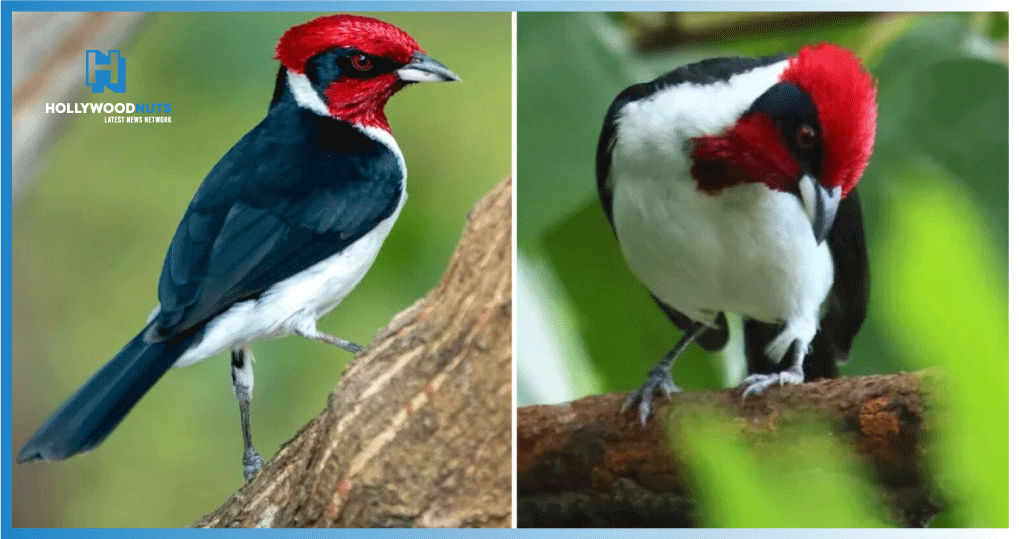When a Classic Black and White Combination is Finished Off with a Bold
Splash of Red, a Fantastic Trifecta of Color is Produced!
Meet the Masked Cardinal

A sort of bird with similar looks in both sexes, the masked cardinal (Paroaria nigrogenis), is about 16.5 inches long and weighs around 23 grammes. It has a flat, stylized crown and a brief, rounded occipital crest. It has a mask that is primarily red with black ear covers, a little black mark on the chin, and red on the forehead and crown. This red colour keeps descending, creating a bib, reaching the throat, malar region, and top part of the breast. The upperparts, wings, and tail are all black. The sides of the chest are white up to the nape and top of the neck. The iris of this bird’s eyes is an intense orange. Legs are blackish, with a blackish upper bill and a horn-colored lower bill.

The image by barloventomagico, “Cardenal bandera alemana, Mantequero [Masked Cardinal] (Paroaria nigrogenis),” is made available under a CC BY-NC-ND 2.0 licence.
This species resembles the Marsh Cardinal (Paroaria gularis), however the Marsh Cardinal is larger and has a black mask.
Associated Reading
Golden brows and a goatee with an equal amount of gold points, all protruding from a shiny, velvety black face, only serve to enhance an already magnificent appearance!
The cardinal wearing a mask also has a black mark on its chin and a red bib rather than a black one.
Cardenal pantanero, Masked Cardinal, and Paroaria nigrogenis by felix are all covered by the CC BY-SA 2.0 licence.
Eastern Colombia, northern Venezuela, Trinidad, and Brazil’s upper portions of the Negro River are home to the Masked Cardinal, which is only found there.
Feroze Omardeen’s “Masked Cardinal Caroni P2” is published under a CC BY 2.0 licence.
They favour moist savannahs and gallery forest borders that are close to water sources. favouring open spaces in general.
A CC BY-SA 2.0 licence has been granted to Félix Uribe from Rionegro, Antioquia, Colombia.
Although it is known that this species enjoys eating a broad variety of foods, including fruit, insects, and seeds, it is unknown precisely which plants or insects it prefers to eat.

The image by barloventomagico, “Cardenal Bandera Alemana, Mantequero [Masked Cardinal] (Paroaria nigrogenis),” is made available under a CC BY-NC-ND 2.0 licence.
In Venezuela, the Masked Cardinal’s breeding season typically lasts from June to November. when a nest constructed of little twigs and bark is lined with even smaller materials and spider web. This is often positioned 3 metres above water on a branch of a tree. Within is a clutch of two pale cream eggs with olive-brown markings that are primarily focused at the bigger end. Molothrus bonariensis commonly parasitizes nests, which is unfortunate.

The image by barloventomagico, “Cardenal Bandera Alemana, Mantequero [Masked Cardinal] (Paroaria nigrogenis),” is made available under a CC BY-NC-ND 2.0 licence.
According to the IUCN “Red List,” this species is considered to be of “Least Concern.”
IN THE VIDEO Underneath, YOU CAN WATCH AND Pay attention TO THIS BIRD:

